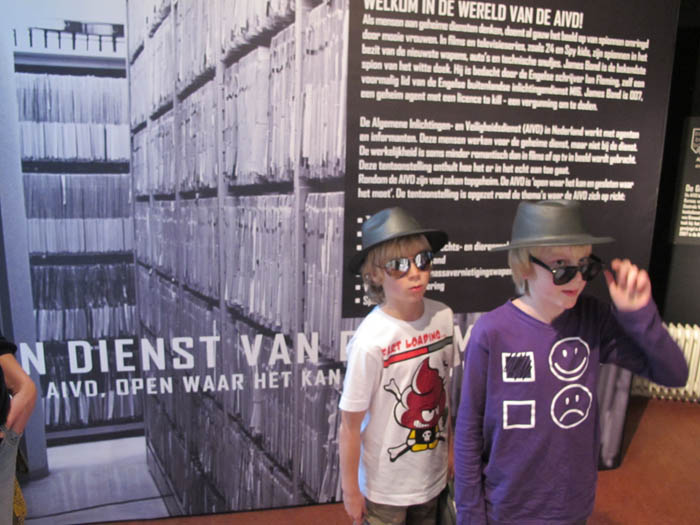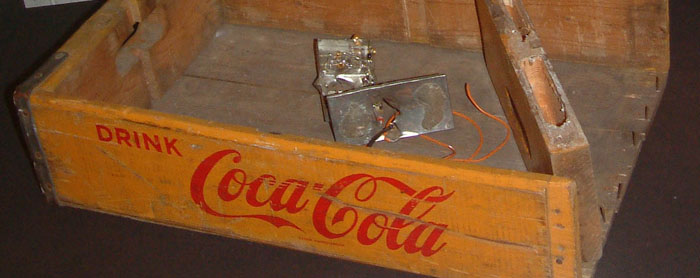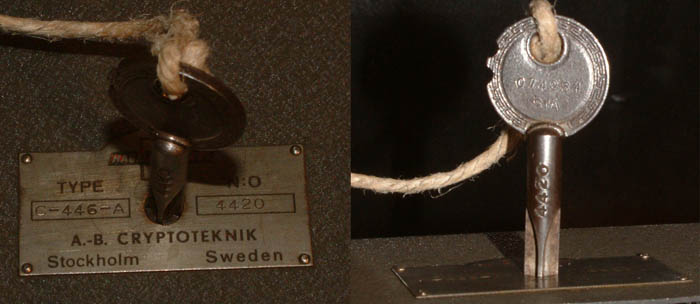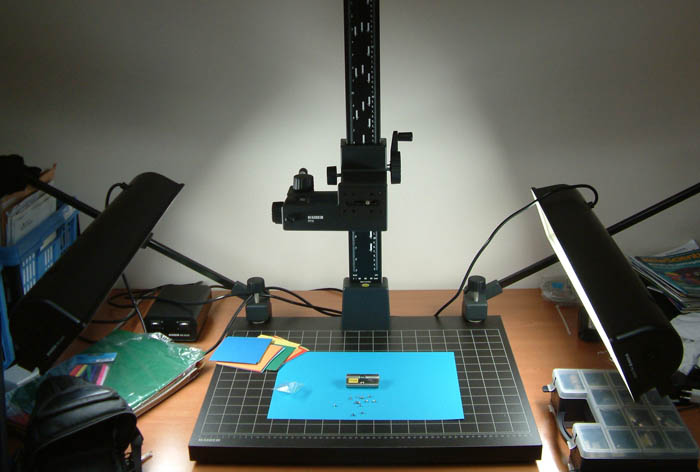Just a few weeks I felt like a kid in the candy-store at the small exhibition about the history of our Dutch intelligence service AIVD. And even though the exhibition was relatively small, there was a lot to see. The great thing is they showed items that were in real use at the service before. I will cover some subjects that interest me (and hopefully you) a lot.
Take for instance hidden transmitters (bugs). I remember reading about the famous 1977 train-hijack in the Netherlands in a book about counter terrorism. The hijackers requested at one moment of time a crate full of soda and a band-aid box. In the book they mentioned it took the intelligence services great difficulties to find a soda crate that could be prepared with an audio-transmitter. For that purpose they traveled all trough the country trying to find an older type wooden ‘coca cola’ crate . The actual crate they used was at the exhibition, and showed the transmitter and hidden compartment in detail. The transmitter in the soda case makes sense to me, but the at the band-aid box I am not sure if they only show the batteries, or that I do not understand the structure of the transmitter(s).
One other thing that interests me is encryption. At the exhibition was a Hagelin C 446 A encryption device, (build in 1945). I am always very interested to see what kind of lock is installed on devices like that, because it reflects the state of the art in locks at that time. The Hagelin is equipped with an Ikon ‘cross beard’ lock. Often at these kind of devices you see the serial number is stamped into the key. Besides the lock on the Hagelin machine there was only one other display that covered keys. It showed a hollow key used to smuggle messages.
But they had more crypto stuff. It is widely known that “one-time pad encryption (OTP)” is a type of encryption that has been proven impossible to crack if used correctly. For the fine details check out wikipedia. In an OTP system the sender and receiver make use of a small ‘code book’ or ‘code table’ that is only used once. Agents that were sent out sometimes had to smuggle this code material with them, and at the exhibition they showed how that was done. They used hollow batteries, a travel “comb and mirror kit” and even the good old ‘hollow heel shoe trick’ to hide the thin sheets containing the codes. It seems from the material at the show they only used numbers on their code sheets.
Other methods of transferring messages that are on display are ‘dead letterboxes’ and a ‘burst transmitter’. The dead letterbox they showed was nothing more then a piece of cement with some messages inside. This ‘rock’ would be dropped at a known location by one agent, and later picked up by another. This way the agents should not have to meet face to face, and if one of them was under surveillance the surveillance had to be pretty strict to see the agent throw or pick up a rock from the ground. The burst transmitter is another way of communication. The message was prepared by the agent, and then transmitted at high speed (in a burst) via a special shortwave transmitter. Because the length of the transmission was short, there was little chance of detection, let alone allow for radio location measurements.
It is worth visiting the exhibition in Zoetermeer, especially if you have kids. There is a real mission for them, and they have to complete a puzzle search to get a small prize. It is open for the public until February 27 2011.




